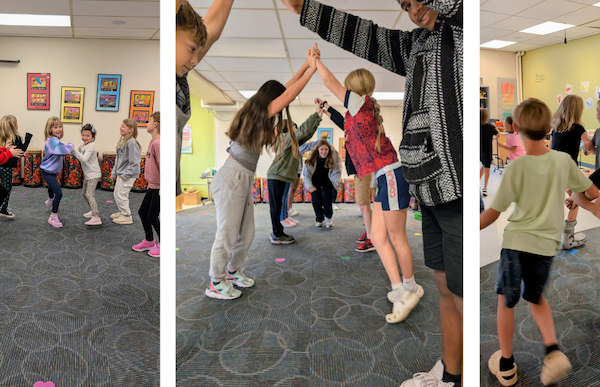
The Power of Theater in Learning
December 6, 2024
Winter Break Tips for Families
December 20, 2024
"Think time," also called "wait time," is a teaching strategy where teachers pause after asking a question or giving information. This pause gives students a chance to think before they respond. It’s a small change, but it can make a big difference in helping kids process information and feel more confident about sharing their ideas.

Springer teachers use think time in lots of ways every day. Here are some examples:
In class we use a "1 minute to think, 2 minutes to discuss" strategy, to allow students time to formulate what they want to verbally share with their partner or table group, in response to discussion questions.
~Mrs. Tolbert, Middle SchoolI use it when listening to student responses, sometimes I'll just repeat what I heard them say and then wait... it's cool to see what else was in their brain that they might not have gotten to say because they were still processing Sometimes (often!) it's nothing like what I expected.
~Ms. Goheen, Lower SchoolWhen I pose a question I try to scan the whole class 2-3 times to give students wait time for more of them to be able to formulate an answer.
~Ms. Ilg, Lower SchoolOne strategy I use to encourage wait time is that after asking a question or giving a prompt for them to share about, I have students put a thumbs up symbol against their chest when they are ready to share. This gives think time for students to develop their idea. When I see that all or almost all thumbs are up, I ask them to raise their hand if they would like to share. This gives students the appropriate think time and also removes the pressure that you may be called on to share if you are not prepared or would rather keep your idea to yourself.
~Mrs. Donahoe, Lower SchoolI use "wait time" when asking students prompting questions to help them with their assignments. It may take students a moment to process the question and formulate a response, hence the waiting period. This is so valuable in teaching. Sometimes it feels "easier" to just give students the answer but there is a metaphor that sticks with me about how as soon as you take the pencil out of the student's hand the learning can be lost.
~Ms. Sprague, High School
Think time benefits all students, especially those who may need extra time to organize their thoughts or feel shy about speaking up. Instead of rushing to answer quickly, students can take a moment to reflect and come up with more thoughtful responses. This helps them better understand what they’re learning and connect it to other ideas.
It also makes classroom discussions more engaging. When everyone has time to think, students listen more closely and participate more actively. In fact, Ms. Goheen notices this her classroom too, sharing. "I also use it when teaching and I notice they've gotten distracted. I'll just stop talking for a few seconds and they literally lean in. The momentary confusion snaps that attention right back to the here and now."
Teachers benefit too—they get to see how their students are thinking and can adjust their teaching to meet different needs.
Adding think time doesn’t require major changes in the classroom. It can be as simple as waiting a few extra seconds after asking a question. This small pause encourages deeper thinking, builds confidence, and creates a more supportive environment for all learners.
In education, think time reminds us that sometimes the best learning happens when we give students the space to think and grow. More great perspectives and research on think time can be found using these links: Edutopia, Additudemag, and Harvard.
Thanks to this week's contributors:Teachers from Springer Lower, Middle and High Schools.



